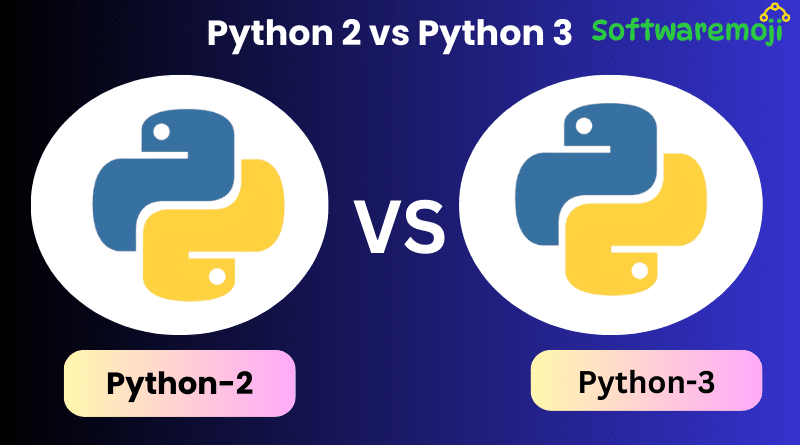
👉Python 2 vs Python 3: Key Differences and Which One to Use in 2025
Python 2 vs Python 3: Python is one of the most widely used programming languages in the world. While Python 3 is the latest and most recommended version, Python 2 was once a major player. Understanding the differences between Python 2 and Python 3 is crucial for developers. Let’s break down the key aspects of both versions and decide which one suits your development needs in 2025.
👉What is Python 2?
Python 2 was a significant release that improved the coding experience compared to earlier versions. It implemented Python Enhancement Proposals (PEP) for smoother development. However, Python 2.7 (the final Python 2.x version) is no longer maintained since 2020.
👉What is Python 3?
Python 3 is a modern version of Python, introduced in December 2008. It aimed to resolve issues found in Python 2 and introduced improvements to simplify syntax, enhance functionality, and provide better compatibility with future updates. Since Python 3 is not backward compatible with Python 2, migration required significant adjustments in codebases and libraries.
👉Key Differences Between Python 2 and Python 3
Feature | Python 3 | Python 2 |
| Release Date | 2008 | 2000 |
| Print Function | print(“Hello World!”) | print “Hello World!” |
| Integer Division | Dividing integers returns a float | Dividing integers returns an integer |
| Unicode Support | Unicode is the default string format | Strings require u prefix for Unicode |
| Syntax Simplicity | Improved, cleaner syntax | Comparatively complex syntax |
| Comparison Rules | Simplified rules for ordering comparisons | Complex rules for ordering comparisons |
| Iteration | Uses range() for iterations | Uses xrange() for iterations |
| Exception Handling | Exceptions enclosed in parentheses | Exceptions enclosed in notations |
| Variable Leaks | Variables in loops retain their values | Variables in loops may change unexpectedly |
| Library Support | Most modern libraries support Python 3 | Older libraries may only support Python 2 |
👉Why Learn Python 2?
Python 2 vs Python 3:While Python 2 is outdated, there are specific scenarios where learning it is still beneficial:
- Working with Legacy Code: Many companies still rely on Python 2 codebases that require maintenance.
- DevOps Tools: Configuration management tools like Puppet or Ansible may require Python 2.
- Compatibility Issues: Some older third-party libraries are only compatible with Python 2.
👉Why Choose Python 3?
Python 3 is the preferred version for modern developers due to its enhanced features and compatibility with advanced technologies:
- Better Support for AI, ML, and Data Science
- Active Development and Community Support
- Simplified Syntax for Easier Learning
- Improved Libraries and Toolkits
👉Python 2 vs Python 3 Example Code
Python 3 Code Example:
def main():
print(“Hello World!”)
if __name__ == “__main__”:
main()
Python 2 Code Example:
def main():
print “Hello World!”
if __name__ == “__main__”:
main()
👉Which Python Version Should You Use?
For new developers or fresh projects, Python 3 is the clear choice. With Python 2 support officially discontinued in 2020, there is little reason to start new development with it. However, developers working with legacy code or certain DevOps tools may still require Python 2 knowledge.
👉Summary
Python 2 vs Python 3:Python 3 has become the go-to version for developers due to its simplicity, enhanced features, and improved performance. While Python 2 was vital in earlier times, transitioning to Python 3 ensures you stay updated with modern programming practices. Python 2 vs Python 3 For most developers in 2025, Python 3 is the best choice to future-proof their skills and projects.
